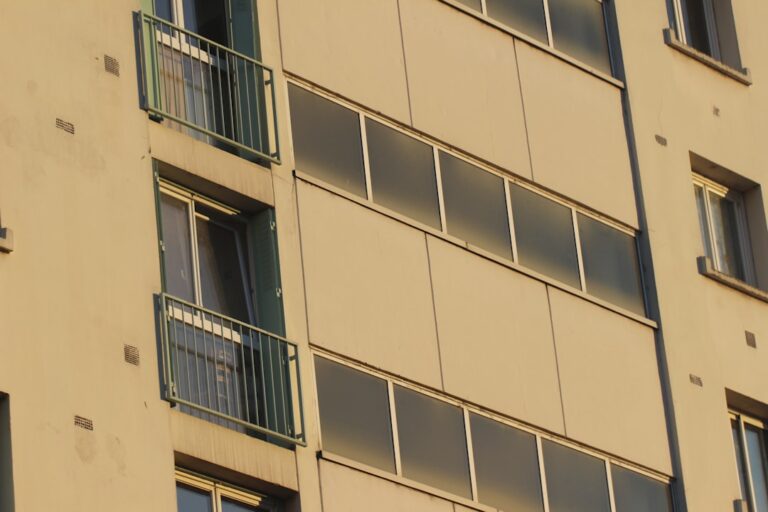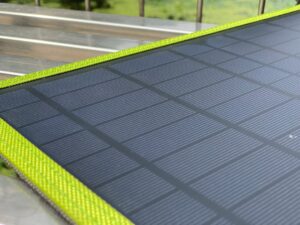Passive solar window assemblies are integral components of sustainable architecture, designed to harness the sun’s energy for heating and lighting while minimizing reliance on mechanical systems. These assemblies typically consist of high-performance glazing, framing materials, and strategic placement within a building’s design. The primary goal is to optimize natural light and heat gain during colder months while reducing unwanted heat during warmer periods.
By effectively managing solar energy, passive solar window assemblies contribute to a building’s overall energy efficiency and comfort. The concept of passive solar design is rooted in the principles of thermodynamics and environmental science. It emphasizes the importance of orientation, material selection, and architectural features that work in harmony with the local climate.
Understanding how these elements interact allows architects and builders to create spaces that not only reduce energy consumption but also enhance the occupants’ quality of life. As awareness of climate change and energy conservation grows, the significance of passive solar window assemblies becomes increasingly apparent in modern construction practices.
Key Takeaways
- Passive solar window assemblies utilize the sun’s energy for heating, lighting, and cooling buildings.
- Choosing the right windows for passive solar design involves considering factors such as orientation, size, and glazing.
- Utilizing thermal mass, such as concrete or masonry, can help store and distribute heat in a passive solar building.
- Positioning windows for maximum sunlight exposure can optimize natural light and heat gain in a building.
- Incorporating overhangs and awnings can provide solar shading to prevent overheating in the summer while allowing sunlight in the winter.
Choosing the Right Windows for Passive Solar Design
Glazing Options
Double or triple-glazed windows with low-emissivity (Low-E) coatings are often recommended, as they provide excellent insulation while allowing natural light to penetrate. These coatings reflect infrared light, keeping heat inside during winter while blocking excessive heat during summer months.
Frame Materials
In addition to glazing, the frame material also impacts the overall performance of passive solar window assemblies. Wood, vinyl, and fiberglass frames offer varying levels of insulation and durability. For instance, fiberglass frames tend to have better thermal performance compared to aluminum frames, which can conduct heat and cold more readily.
Optimizing Window Performance
Therefore, careful consideration of both glazing and framing materials is essential to ensure that the windows contribute positively to the building’s energy efficiency goals.
Utilizing Thermal Mass for Energy Efficiency
Thermal mass refers to materials that can absorb, store, and release heat over time, playing a vital role in passive solar design. By incorporating thermal mass elements such as concrete, brick, or stone within a building’s structure, designers can enhance energy efficiency and maintain comfortable indoor temperatures. During the day, these materials absorb heat from sunlight streaming through windows, which is then released slowly into the space as temperatures drop in the evening.
The strategic placement of thermal mass is critical for maximizing its benefits. Ideally, thermal mass should be located in areas where it can receive direct sunlight, such as south-facing walls or floors. This positioning allows the materials to absorb solar energy during the day and release it when needed, reducing the reliance on heating systems.
By effectively utilizing thermal mass, buildings can achieve a more stable indoor climate while minimizing energy consumption.
Positioning Windows for Maximum Sunlight Exposure
| Room | Window Direction | Amount of Sunlight |
|---|---|---|
| Living Room | South | High |
| Bedroom | East | Moderate |
| Kitchen | West | Low |
The positioning of windows is a fundamental aspect of passive solar design that directly influences a building’s energy performance. To maximize sunlight exposure, windows should be oriented primarily towards the south in the Northern Hemisphere and north in the Southern Hemisphere. This orientation allows for optimal solar gain during winter months when the sun is lower in the sky while minimizing direct sunlight during the hotter summer months.
In addition to orientation, the size and placement of windows should be carefully considered. Larger windows can be beneficial for capturing more sunlight, but they must be balanced with shading strategies to prevent overheating. The use of clerestory windows or strategically placed skylights can also enhance natural light penetration without compromising thermal comfort.
By thoughtfully positioning windows, architects can create bright, inviting spaces that leverage natural light while maintaining energy efficiency.
Incorporating Overhangs and Awnings for Solar Shading
To protect against excessive heat gain during warmer months, incorporating overhangs and awnings into passive solar window assemblies is essential. These architectural features provide shade by blocking direct sunlight from entering through windows when it is most intense. Overhangs can be designed based on the building’s latitude and the sun’s seasonal path, ensuring that they effectively shield windows during summer while allowing sunlight to enter during winter.
Awnings serve a similar purpose but offer more flexibility in design and installation. They can be adjusted or retracted based on changing weather conditions or personal preferences. By utilizing these shading devices, homeowners can significantly reduce cooling costs while enhancing indoor comfort.
The careful integration of overhangs and awnings not only contributes to energy efficiency but also adds aesthetic value to a building’s exterior.
Selecting Low-E Coatings for Solar Heat Gain Control
Low-emissivity (Low-E) coatings are a critical component in passive solar window assemblies, providing an effective means of controlling solar heat gain while allowing natural light to enter. These thin metallic coatings are applied to glass surfaces to reflect infrared radiation while permitting visible light to pass through. As a result, Low-E windows help maintain comfortable indoor temperatures by reducing heat loss during colder months and minimizing heat gain during warmer periods.
When selecting Low-E coatings, it is essential to consider the specific climate conditions of the building’s location. Different types of Low-E coatings are designed for various applications; some are optimized for cold climates to maximize solar gain, while others are tailored for hot climates to minimize it. By choosing the right Low-E coating, homeowners can enhance their passive solar window assemblies’ performance and contribute to overall energy savings.
Using Insulated Window Frames for Thermal Performance
The thermal performance of passive solar window assemblies is significantly influenced by the choice of window frames. Insulated window frames are designed to minimize heat transfer between the interior and exterior environments, thereby enhancing energy efficiency. Materials such as fiberglass or vinyl offer superior insulation properties compared to traditional aluminum frames, which can conduct heat and cold more readily.
In addition to material selection, frame design plays a crucial role in thermal performance. Multi-chambered frames with insulating air spaces can further reduce heat transfer and improve overall energy efficiency. By investing in high-quality insulated window frames, homeowners can ensure that their passive solar window assemblies perform optimally, contributing to reduced energy costs and increased comfort throughout the year.
Implementing Window Treatments for Energy Conservation
Window treatments are an often-overlooked aspect of passive solar design that can significantly impact energy conservation efforts. Properly selected and installed window coverings can enhance a building’s thermal performance by providing additional insulation and controlling light levels. Options such as cellular shades or thermal curtains can help retain heat during winter months while blocking excessive sunlight during summer.
In addition to their insulating properties, window treatments can also enhance privacy and aesthetics within a space. Homeowners should consider both functional and decorative aspects when selecting window coverings to ensure they complement the overall design while contributing to energy efficiency goals. By implementing effective window treatments, occupants can enjoy a comfortable indoor environment while minimizing their reliance on heating and cooling systems.
Considering Ventilation and Airflow in Passive Solar Design
Effective ventilation and airflow are essential components of passive solar design that contribute to indoor air quality and comfort. Properly designed ventilation systems allow for natural air movement throughout a building, reducing reliance on mechanical cooling systems while promoting thermal comfort. Strategically placed operable windows can facilitate cross-ventilation, allowing cooler outdoor air to enter while expelling warmer indoor air.
Incorporating ventilation strategies into passive solar design requires careful consideration of local climate conditions and building orientation. For instance, in warmer climates, maximizing airflow through open windows can help cool indoor spaces naturally. Conversely, in colder climates, minimizing airflow may be necessary to retain heat during winter months.
By balancing ventilation with thermal performance, architects can create comfortable living environments that leverage natural resources effectively.
Monitoring and Maintaining Passive Solar Window Assemblies
To ensure optimal performance of passive solar window assemblies over time, regular monitoring and maintenance are essential. Homeowners should periodically inspect windows for signs of wear or damage, such as drafts or condensation between panes. Addressing these issues promptly can prevent further deterioration and maintain energy efficiency.
Additionally, cleaning window surfaces regularly helps maximize light transmission and overall performance. Dust or debris accumulation can obstruct sunlight entry and reduce the effectiveness of Low-E coatings. By implementing a routine maintenance schedule, homeowners can ensure their passive solar window assemblies continue to function effectively while contributing to long-term energy savings.
Evaluating the Cost and Benefits of Passive Solar Window Assemblies
When considering passive solar window assemblies, evaluating both costs and benefits is crucial for informed decision-making. While initial investments may be higher than traditional window systems due to advanced materials and technologies, the long-term savings on energy bills often outweigh these upfront costs. Additionally, many regions offer incentives or rebates for energy-efficient upgrades, further offsetting expenses.
Beyond financial considerations, passive solar window assemblies provide numerous environmental benefits by reducing carbon footprints and promoting sustainable living practices. As awareness of climate change grows, many homeowners recognize the value of investing in energy-efficient solutions that contribute positively to both their living environment and the planet as a whole. Ultimately, the decision to implement passive solar window assemblies reflects a commitment to sustainability and responsible resource management in modern architecture.
FAQs
What are passive solar window assemblies?
Passive solar window assemblies are a type of window system designed to maximize the use of natural sunlight for heating and lighting purposes within a building, without the need for mechanical or electrical systems.
How do passive solar window assemblies work?
Passive solar window assemblies work by allowing sunlight to enter the building and be absorbed by thermal mass materials, such as concrete or masonry, which then release the heat slowly over time, helping to regulate the indoor temperature.
What are the benefits of passive solar window assemblies?
The benefits of passive solar window assemblies include reduced energy consumption, lower heating and lighting costs, and improved indoor comfort and air quality. They also contribute to environmental sustainability by reducing the reliance on fossil fuels.
What are some common features of passive solar window assemblies?
Common features of passive solar window assemblies include low-emissivity coatings to reduce heat loss, insulated frames to minimize thermal bridging, and strategic placement to maximize solar gain in the winter and minimize it in the summer.
Are there any limitations to passive solar window assemblies?
Limitations of passive solar window assemblies may include the need for careful design and orientation to maximize effectiveness, as well as potential challenges in maintaining a comfortable indoor temperature during extreme weather conditions.






